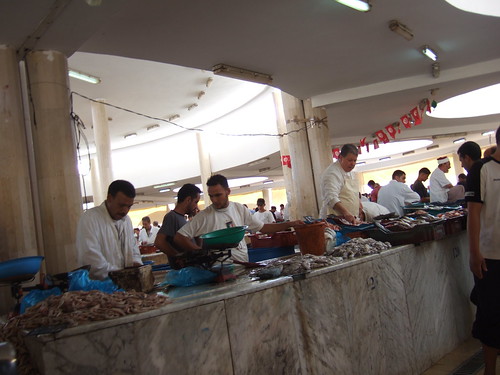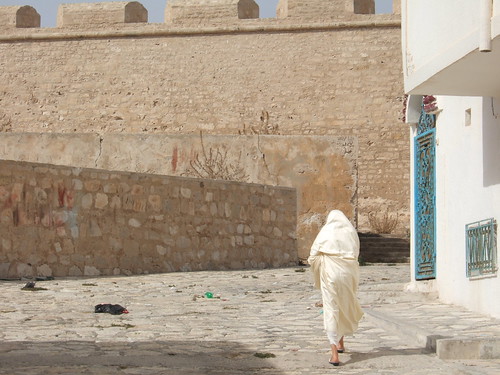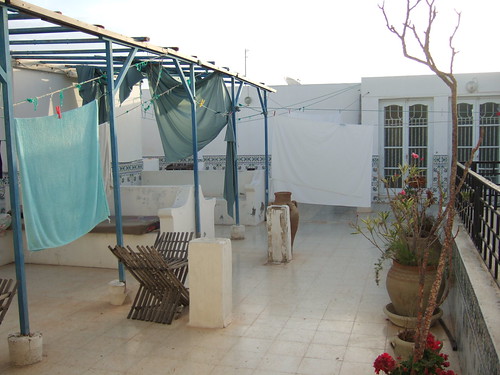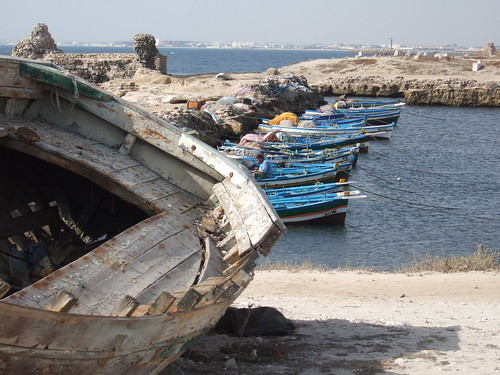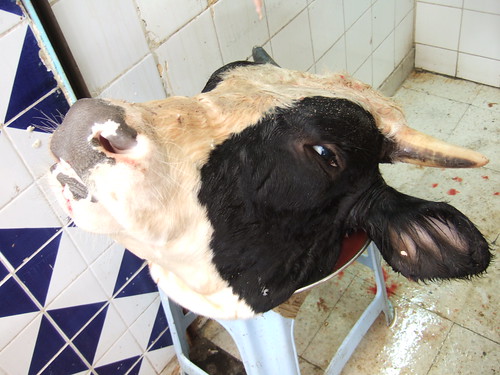From Mahdia, English John, the Dr. and I jumped in the car to catch the sunset at El Jem, Tunisia’s most impressive Roman monument. It would have been more impressive, of course, if we actually made it inside. We arrived in El Jem just a little before 6pm after a 45-minute drive. When we walked to the gate, the guard told us El Jem closed earlier because of Ramadan. The sign said closing time is at 7pm. We begged and pleaded for him to let us in, even for just fifteen minutes, so we can take photographs from inside, but he shook his head and pretended he didn’t understand French. Funnily enough, he spoke enough French to ask us for 10 dinars each.

We refused to give him a bribe to let us in. We walked away from the gate, cursed him so that he doesn’t get to enjoy the forty virgins in paradise and just walked around what was once the crowning glory of ancient Thysdrus, a town that enjoyed prosperity in the first few centuries.
El Jem is amazingly intact. It is is also a World Heritage-listed monument and is considered the third largest colosseum in the Roman world. Emperor Gordian reportedly committed suicide inside when a rebellion against Maximus was becoming obviously doomed. It was a bummer not to watch the sun set from inside, but like the Dr. said, C’est la vie.

The next day, we left English John and Mahdia and started our drive back to Tunis. We made a quick stop at Monastir to pay our respects to Habib Bourguiba, the man responsible for Tunisia’s independence from France. In 1934, Sorbonne-educated Bourguiba led a movement to break away from the ruling Destour Party. On April 9, 1938, the French killed a lot of its supporters demonstrating in Tunis. Bourguiba was arrested and sent to exile to France. Years later, he was able to bring international attention to Tunisia. By 1954, the French announced negotiations for Tunisian autonomy, and when an agreement was reached a year later, Bourguiba returned home a hero. The country was granted independence on March 20, 1956 with Bourguiba as prime minister. When it became a republic, he was declared its first president until President Ben Ali toppled his government in November 7, 1987. Today, every Tunisian town has an Avenue Bourguiba and an Avenue 7 Novembre. The mausoleum itself is reached via a long, paved walkway with green and gold arches and a marble courtyard.

Monastir’s star attraction, though, is its ribat, or defensive fortress. It’s Tunisia’s finest example of Islamic architecture, with its labyrinthine passageways and staircases. Unfortunately, it is also promoted by the tourism board as the film set for Monty Python’s Life of Brian, including the scene where Tunisian extras laugh at Biggus Dickus.

From Monastir, we went back inland to visit the fourth holiest city of Islam, Kairouian. We were told that seven visits to Kairouan equals one visit to Mecca. Since it’s an important pilgrimage destination and North Africa’s holiest Islamic site, it’s also World Heritage-listed. Non-Muslims are only allowed through one of the nine gates of the Great Mosque. We arrived there at 2pm and missed the opening hours, so we followed a young kid who took us to the roof of the carpet shop a few doors down to see the view of the domes. This privilege required us to browse through the store’s carpets and uncomfortably say no to all of them.

We also followed the boy to Bir Barouta, a well whose waters is supposedly connected to the well of Zem-Zem in Mecca. Drinking the water from its well is an important moment for those who believe that. The water didn’t make me sick, even though we’ve read that you have to drink at your own risk. The scene inside, though, is a little bit more staged–a camel with colorful scarves hanging on its side, walks around the well to turn the wheel that draws the water. We left a couple of dinars for the man who ordered the camel to start moving in Arabic.
Feeling like we’ve given enough dinars to Kairouian’s locals, we returned to our car and left for the Tunisian north cape.
Related post/s:
Day 11 in Tunisia: El Jem photos on Flickr
Day 12 in Tunisia: Monastir photos on Flickr
Day 12 in Tunisia: Kairouian photos on Flickr
Day 9, 10 & 11: Sfax to Mahdia, Tunisia














